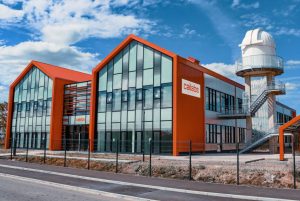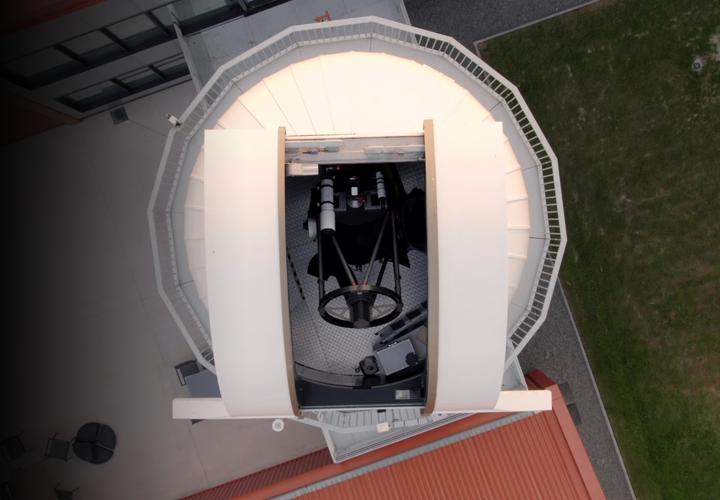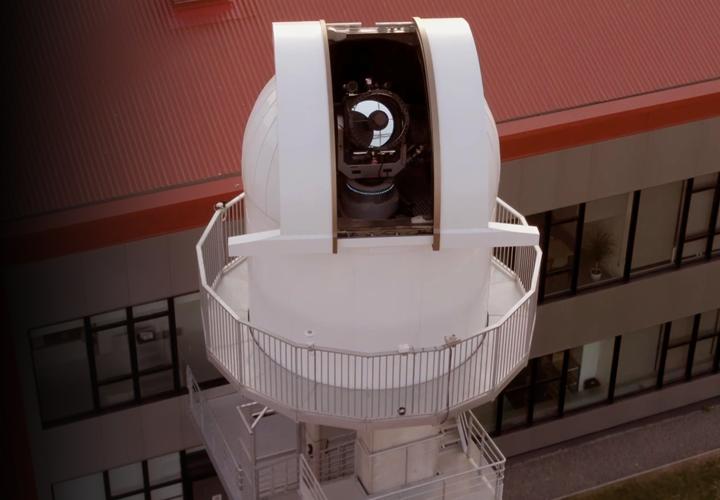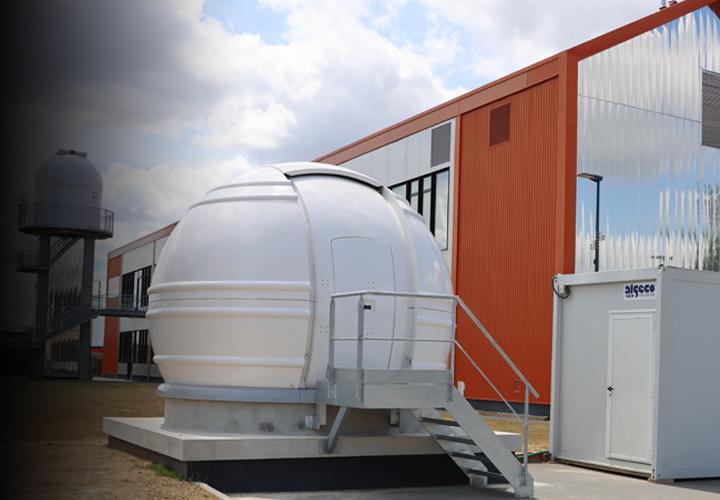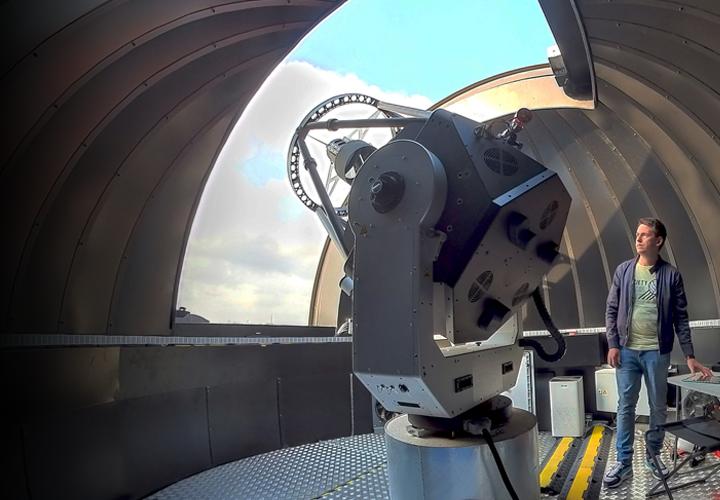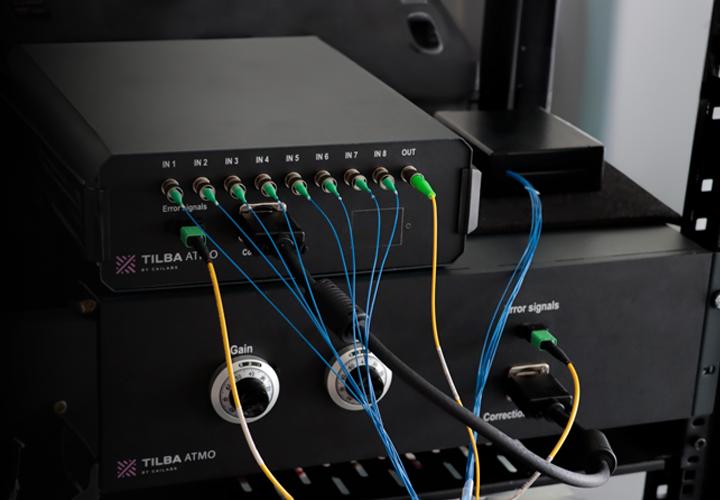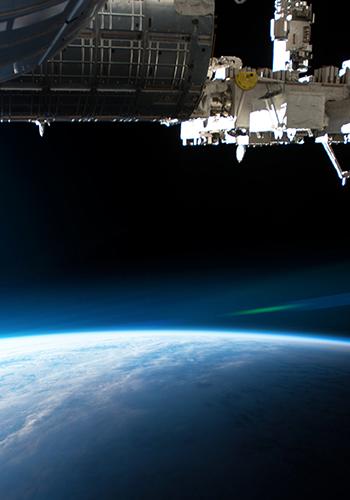Optical Ground Stations
Operate optical ground stations for 10+Gbps laser communications with integrated atmospheric turbulence management. TILBA®-OGS is a comprehensive, turnkey solution for reliable free-space optical communication networks.

Cailabs develops, manufactures and delivers TILBA®-OGS optical ground stations, supplying its customers and partners with industrial optical ground stations that meet both industry standards and the specific requirements of space-to-ground links. Designed for secure, robust and spectrum license-free bidirectional links at 10+Gbps TILBA®-OGS integrate technology building blocks ensuring high-performance bidirectional optical links.
Leveraging our patented Multi-Plane Light Conversion (MPLC) technology, our optical ground stations also include three unique technology building blocks for performance optimization: TILBA®-ATMO and TILBA®-IBC for static management of atmospheric turbulence on both the receiver side (Rx) and the transmitter side (Tx), and TILBA®-CBC for scalability to meet future Tbps feederlink requirements. Cailabs’ stations comply with CCSDS and SDA standards and are agnostic in terms of throughput rate, protocol and modulation format.
TILBA®-OGS: An optical ground station for turbulence-free 10+Gbps Low Earth Orbit (LEO) laser communication
The downlink is carrying data to be transmitted to the OGS from the satellite. The communication beam received by the OGS telescope undergoes optical transport and correction, particularly through TILBA®-ATMO, effectively eliminating the impact of atmospheric turbulence on the beam. Subsequently, the signal is detected by the modem and sent for transmission via the terrestrial optical network.
The beacon designates a laser emission system designed to illuminate the moving satellite, facilitating pointing and acquisition during the initial handshake phase before communication starts, and in the event of signal loss requiring a new handshake.
The laser communication uplink is carrying data to be transmitted to the satellite from the OGS. Upon reception from the terrestrial network, it undergoes processing by TILBA®-IBC in the shelter to enhance its range and robustness against atmospheric turbulence.
This sub system includes the telescope, mount, and tracking intelligence, allowing precise satellite tracking and alignment. The Pointing and Tracking operate during the initial handshake phase before data communication starts and also in the event of signal loss, requiring a new handshake. During the acquisition phase, satellite data is received through the telescope and conveyed to communication systems along the optical injection system.
The OGS subsystems are distributed between the dome and the shelter. The dome houses the emission and the Pointing, Acquisition & Tracking subsystems. It is remotely controllable and equipped with an emergency closure system linked to the dedicated weather station located in the shelter. The infrastructure is tailored to geographical and local specificities.
The weather station monitors key parameters such as wind, humidity, temperature, and rain to protect the sensitive equipment of the OGS. The dome is equipped with an automatic closing system in case of rain or adverse weather conditions. The turbulence monitoring helps to check link availability and estimate the expected performance, particularly in terms of throughput.
TILBA®-ATMO is technological building block that mitigates atmospheric turbulence Rx by decomposing the perturbed wavefront into a limited number of modes and coherently recombining them into a single-mode fiber. TILBA-IBC is a technological building block that mitigates atmospheric turbulence Tx through incoherent combining. Both are based on our unique patented Multi-Plane Light Conversion (MPLC) technology.
Monitoring and control refers to the software that drives the OGS, orchestrating all operations and enabling interfacing with the client. This subsystem is comparable to the brain of the OGS. The client interface allows for scheduling communication passes with satellites and monitoring the progress of various missions.
Its role is to transform the raw light signal into a numerical signal compatible with the terrestrial telecom network. For the downlink, after reception and management of atmospheric turbulence, the optical detector decodes the raw light, and the modem demodulates the received information to convert it into numerical data transmissible via the terrestrial network. Conversely, for an uplink, the modem modulates the information to be transmitted before the resulting signal is processed for turbulence resistance and sent to the satellite.
Keraunos project
Confirming its leadership in ground receiving solutions, the Agence de l’Innovation de Défense (AID) of the French Ministry for Armed Forces has engaged Cailabs to collaborate on the Keraunos project. The aim of the project is to establish and operate an end-to-end optical link, starting from the satellite terminal onboard a nano-satellite – designed and launched into low orbit in 2023 by Unseenlabs – all the way to the ground. Cailabs has successfully designed, manufactured and operates its pilot optical ground station from its location in Rennes, marking a significant milestone in the Keraunos project and in the company’s growth. This achievement places Cailabs among the first European private companies to own and operate an optical ground station, enabling it to experiment with receiving satellite data through optical telecommunications.
Cailabs operates one of the first optical ground stations capable of 10+ Gbps laser communications with low Earth orbit (LEO) satellites
Case Studies
Ressources

